

Direct mail fundraising examples help illustrate the value to non-profits of embracing this channel. A non-profit direct mail strategy should play to the strengths and possibilities of mail. It may look like just ink on paper, but what you do with that mailer can make or break your campaign.
Every part of the direct mail piece you use for your appeal should be dedicated to at least one of the following:
Working together in harmony, your ideas and the components of the package will keep your prospective donor or supporter engaged with your non-profit and your message.
In this post, we’re going to see how direct mail connects donors with organizations and creates or deepens relationships between them.
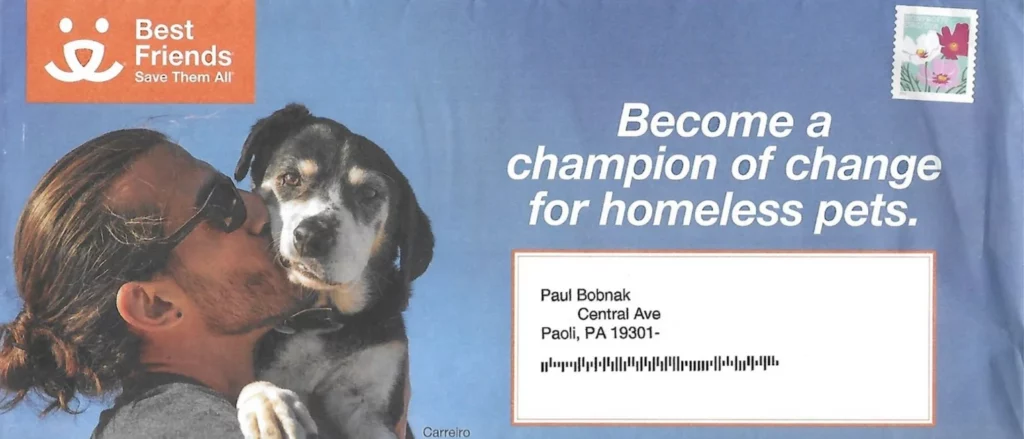
Mailer: Best Friends Animal Society
Date: April 2022
Why It Works: This appeal’s outer – a #12 envelope – uses a stand-out 4-color bleed-to-the-edge image on the front, a contrast to those mailed by many other charities. Four-color images also appear on the reply form and impact brochure inside.
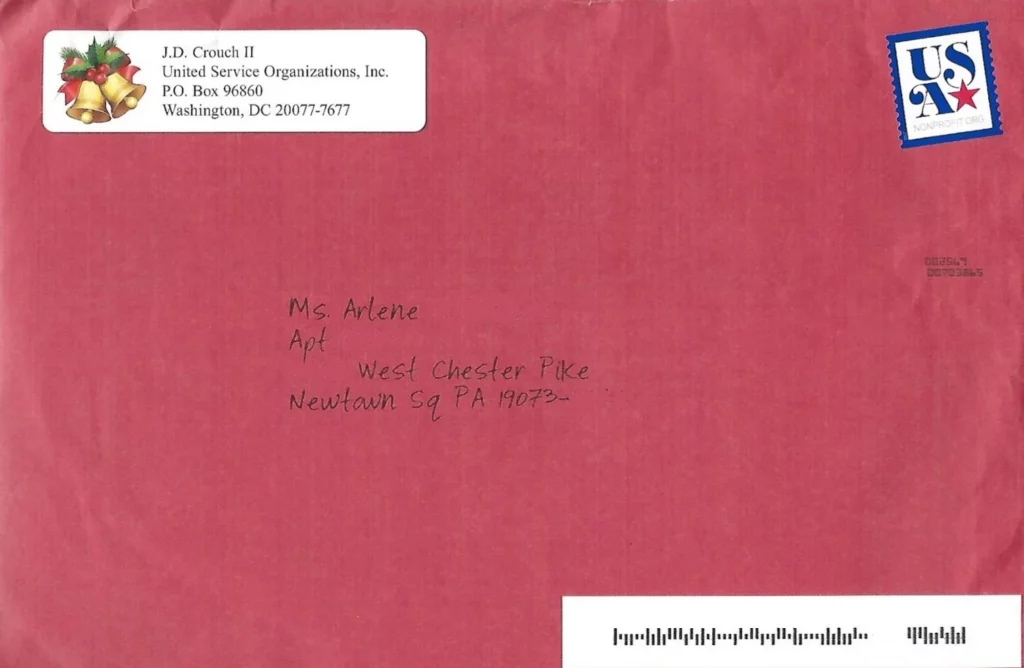
Mailer: USO
Date: December 2020
Why It Works: Most people like getting cards in the mail — birthday cards, anniversary cards, holiday cards, etc. Here, USO reached out to its supporters with a holiday campaign mailed in a typical greeting card outer — notice the live stamp (tilted at an angle) and the handwriting font. Inside, a Happy Holidays card continues the theme from the outer.
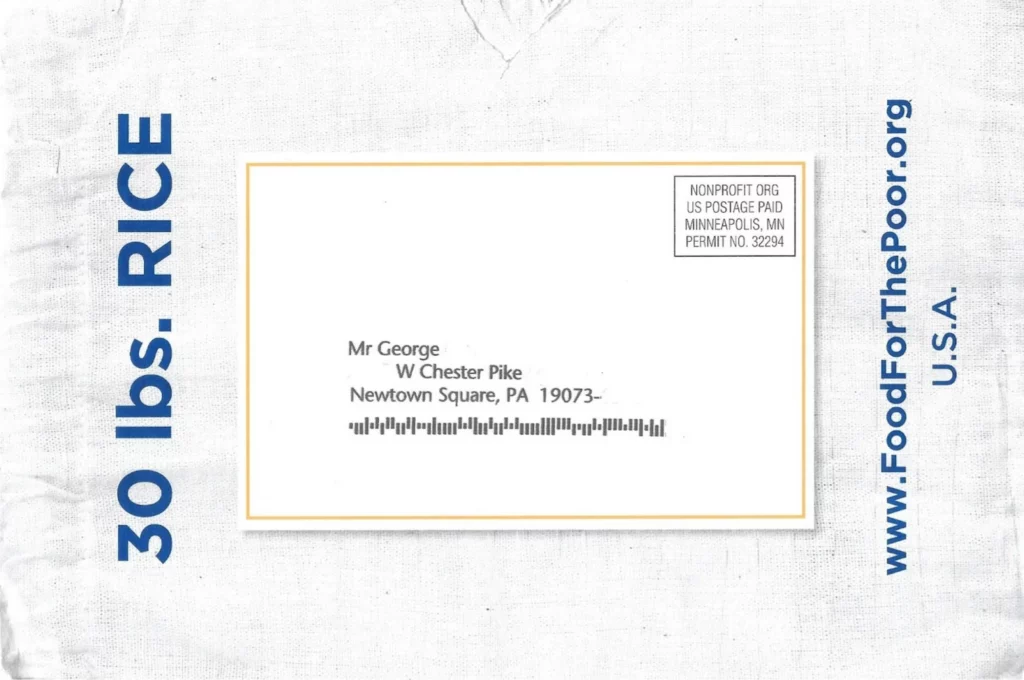
Mailer: Food for the Poor
Date: May 2022
Why It Works: The embossed design of this envelope is immediately noticed the moment a recipient feels the pattern. And that tactile power is boosted by the pattern’s visual association with a burlap sack of rice, very appropriate for an appeal to support shipments of food to kids.

Mailer: American Cancer Society
Date: October 2022
Why It Works: Many non-profits bury mentions of their social media in their direct mail appeals. But because ACS’s Cancer Action Network is all about public policy advocacy, the back page of the letter offers ways to engage and make deeper connections with the group using online platforms like Facebook, Instagram, and YouTube.
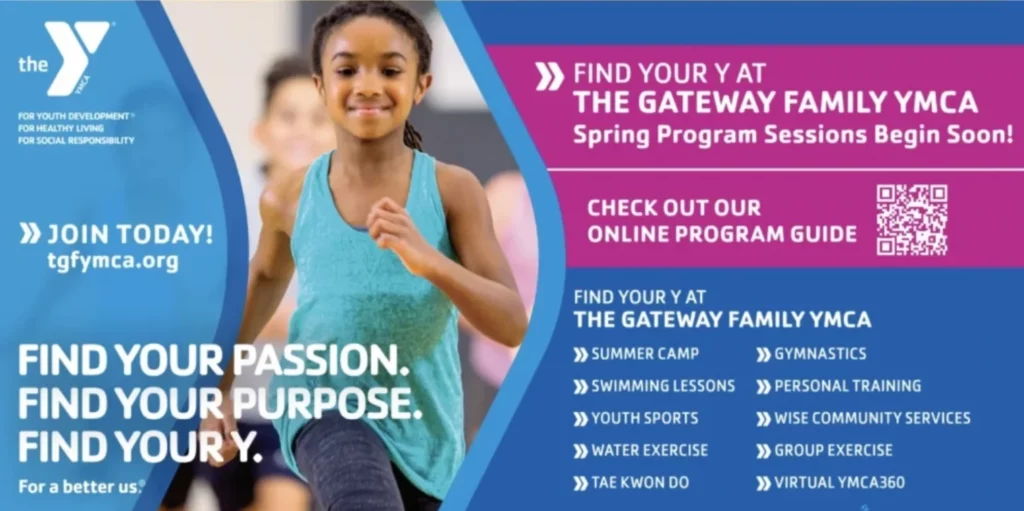
Mailer: Gateway Family YMCA
Date: March 2023
Why It Works: Most direct mail non-profit campaigns use envelopes but for short quick messaging (events, special programs), a postcard will do nicely. The advantages of this format include lower printing costs, more affordable postage, greater design and size flexibility, and easier visibility.
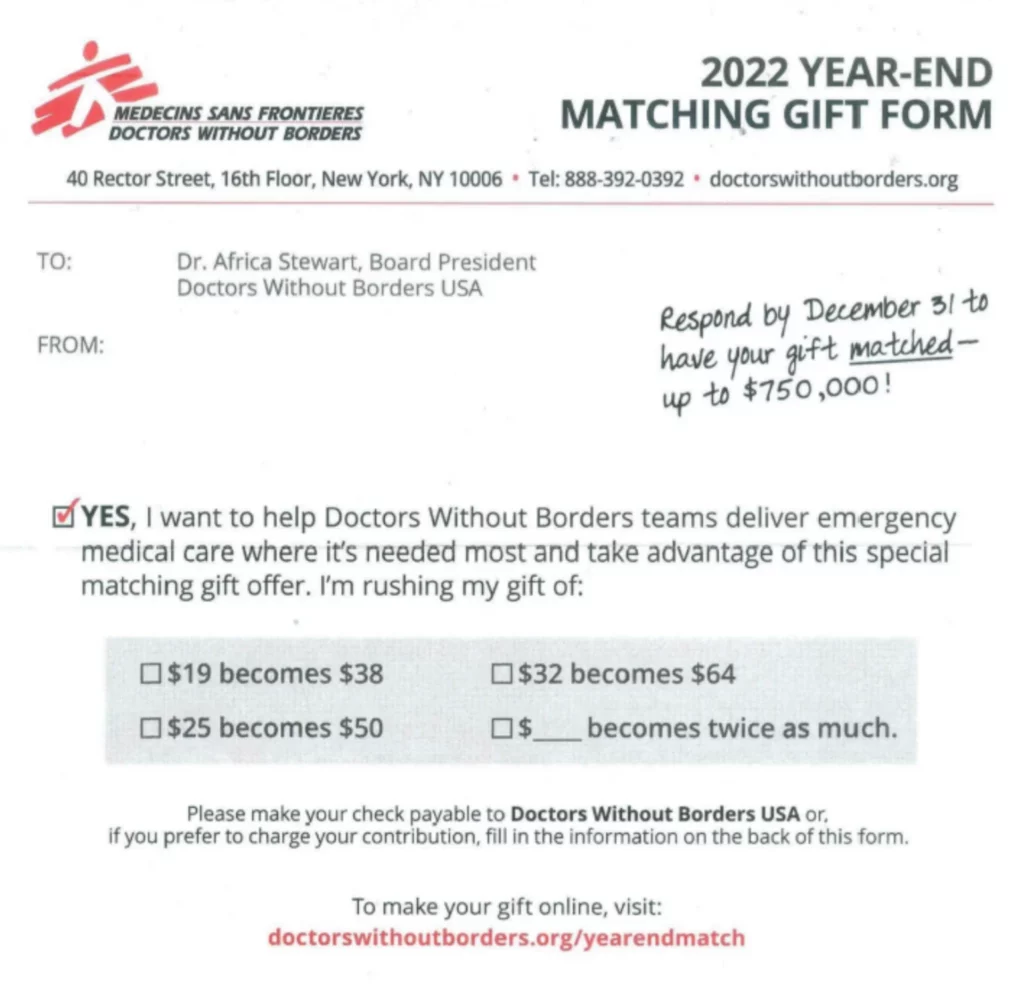
Mailer: Doctors Without Borders
Date: December 2022
Why It Works: Matching challenge campaigns are old hat because they work. But at year-end, they take on added importance as an incentive to get donors to make a last-minute gift. The response form mailed by Doctors Without Borders shows the financial impact of doubling the amounts in its ask string. Also, the deadline is highlighted by a handwritten reminder on the form.
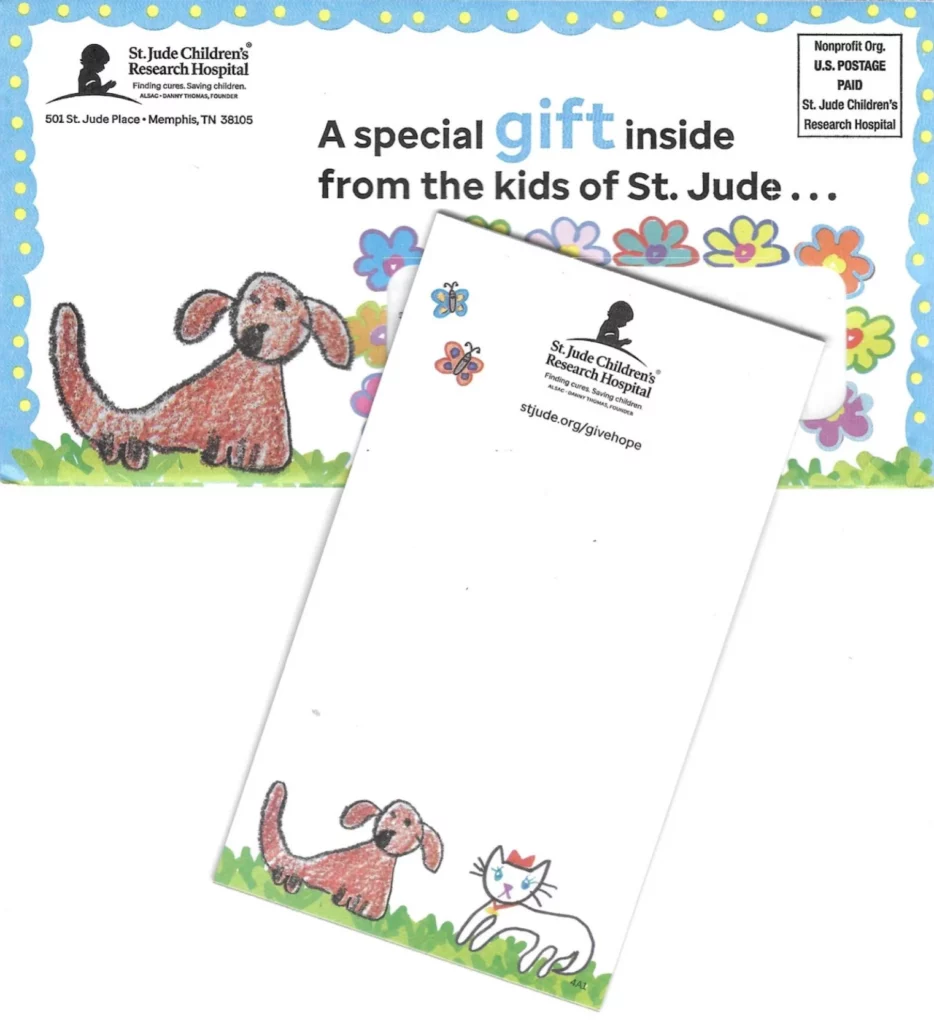
Mailer: St. Jude Children’s Research Hospital
Date: April 2022
Why It Works: Premiums have long been effective response boosters for direct mail fundraising. But whether you include them in your mailer as guilt-inducing freemium or promise to send them following a gift, they should serve more of a purpose than part of a transaction. Rather than generic gifts that may only have a slight connection to your cause, think about how you can use them to subtly (or maybe not so subtly) promote your cause. St. Jude Children’s Research Hospital’s notepad (and envelope) includes the artwork of children who are patients helped by the organization and its donors.
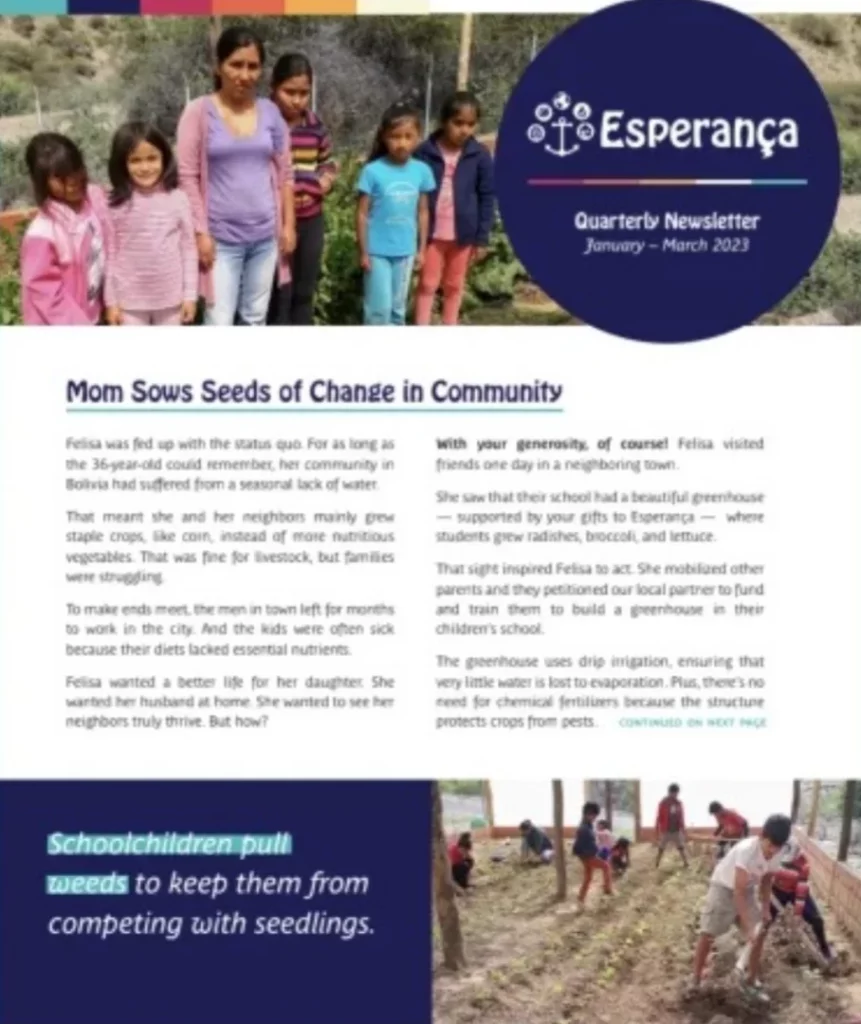
Mailer: Esperança
Date: January 2023
Why It Works: Donor newsletters are a win-win for fundraisers. They keep your current supporters engaged (and improve retention) by showing the impact of their donations. And because it never hurts to ask for money, they can raise revenue on their own if you include a reply device and envelope.
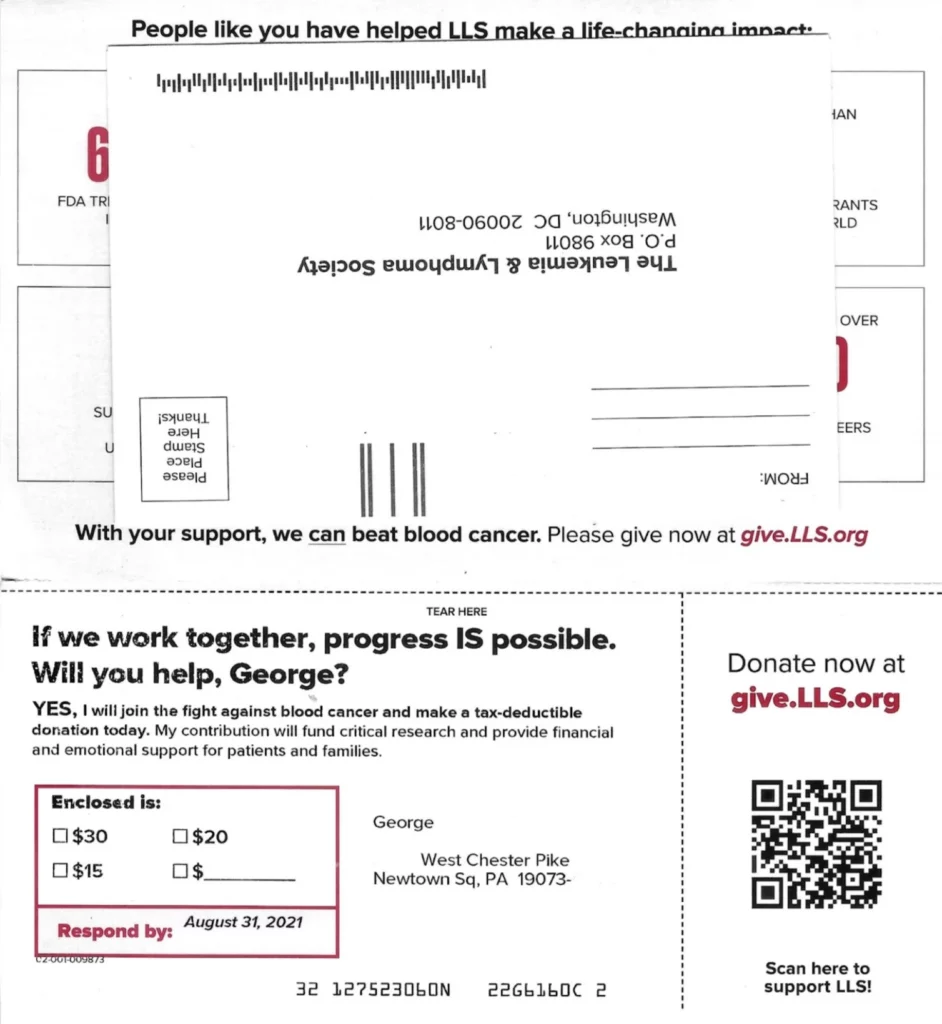
Mailer: Leukemia & Lymphoma Society
Date: June 2021
Why It Works: After – or sometimes as – a prospective donor reads your message, you can give them a shortcut to acting on it by putting a QR code on the letter, the outer envelope, or in this case, on the reply form. This gets them to your site’s donor page quickly so you can put their hard-earned money to work, as well as keep them engaged with content – and hopefully, be thanked.
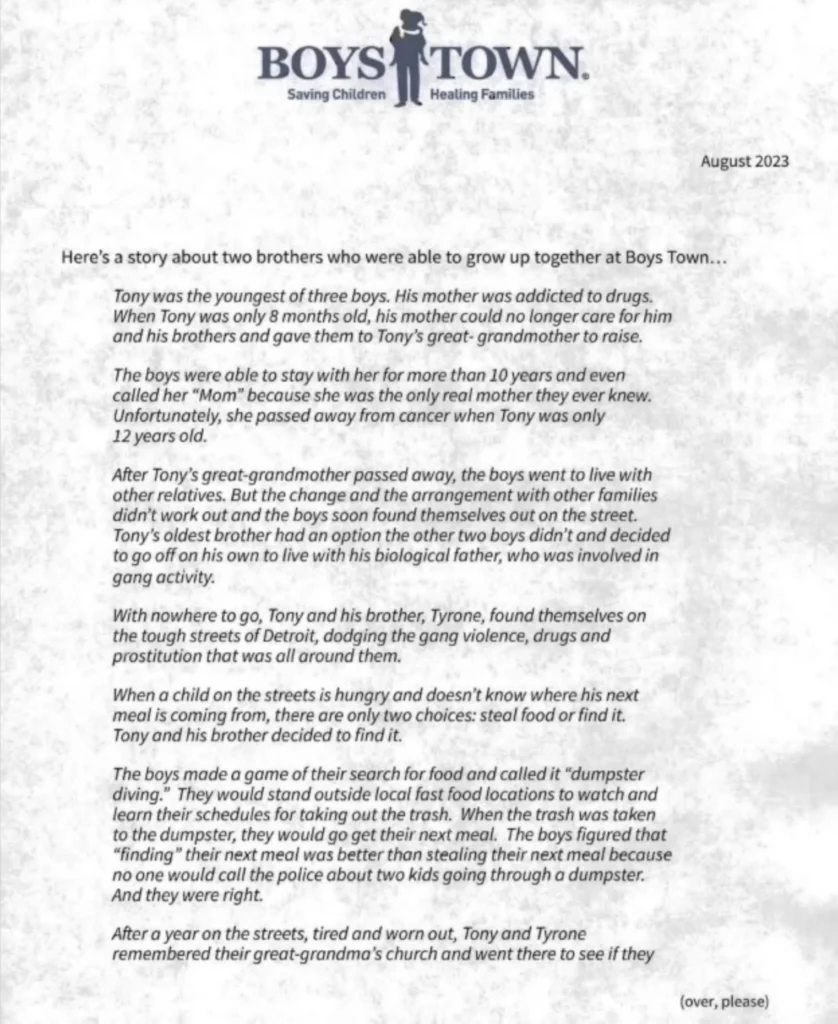
Mailer: Boys Town
Date: August 2023
Why It Works: Good fundraising is about telling stories – real stories – about lives who have been changed for the better by the work of your non-profit. They’re authentic, tap into real emotions (see below), and align with the core beliefs of your audience.
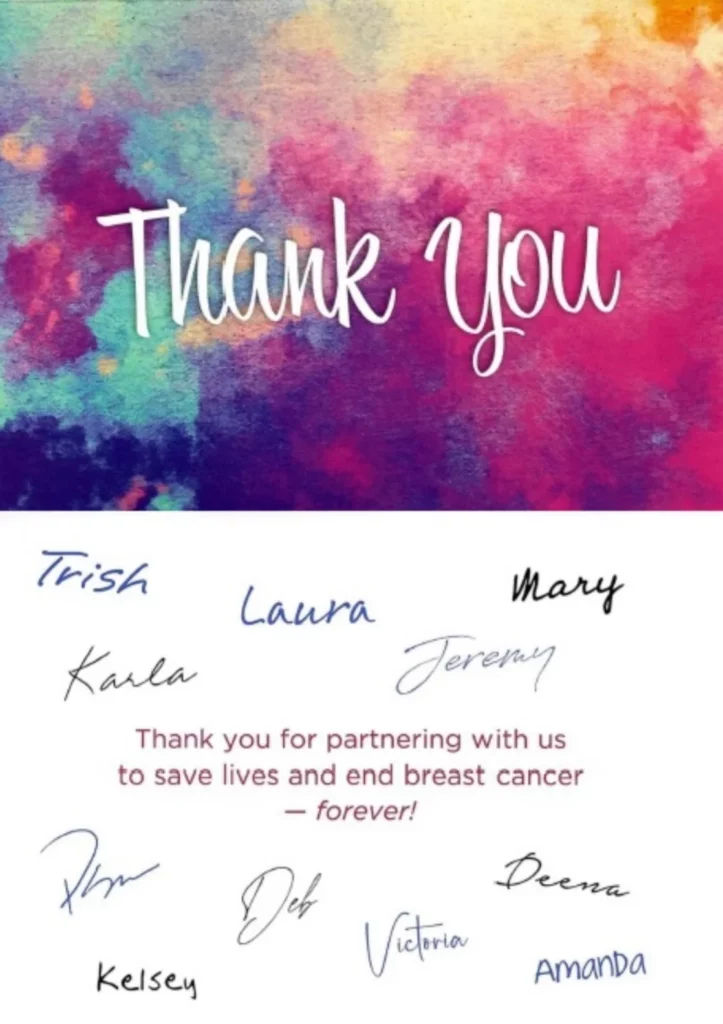
Mailer: Susan G. Komen
Date: June 2023
Why It Works: It’s important to thank donors for their time and generosity. Not only is it the right thing to do, but it makes donors feel valued and builds a spirit of stewardship. Just be sure to say it promptly, and with genuine warmth. This effort included a signed thank you card and a 2-page letter (with another ask) that notes the impact of the supporter’s gift.
Yes, direct mail works for fundraising. Digital channels get a lot of attention, but direct mail fundraising is still the most effective way for non-profits to build support from the general public.
Here are three reasons why fundraising mail is so powerful:
Direct mail donors tend to be older and in prime giving years – primarily Baby Boomers and the Silent Generation, and Generation X. They’ve known mail as the giving channel for decades.
At the same time, millennials and Gen Z are known to be big fans of print, including direct mail. When done cleverly or with an appeal to their mindsets, the right mail piece can motivate a donation.
Research shows that the touch and feel of paper gives donors a deeper understanding of, and engagement with, printed materials. A Temple University study found that paper ads engaged viewers longer than digital ads did. When reviewed a week later, test subjects showed a greater emotional response and memory for physical ads. Print appeals are more likely to stand out compared to clutter in digital channels.
To drive action, tap the emotional pain or pleasure points of your target audience. Create and sustain an emotional connection using headlines, subheads, stories, and images. To be most effective, start with the outer and build using components of your direct mail piece.
One of the most significant factors in successful direct mail fundraising is the form of your appeal. For the vast majority of campaigns, that means the letter.
How to write a direct mail fundraising letter is an art as much as it is a science. While it is something that can be broken down into rules, it also depends on structures that seem familiar to any letter reader while also propelling them along the AIDA process straight to taking the action you want them to take, i.e., to raise money.
You can get started by following these tips:
Your non-profit organization may have a broad base of support from people with diverse backgrounds, experiences, and expectations based on age, income, gender, and even geography. If you have the resources for it, test versions of your basic appeals to prospective donors and for renewal or upgrade campaigns by using copy that resonates more with specific audiences. Adjust headlines, images, CTAs, or even ask amounts to encourage the type of engagement that fits the right profile.
We like to think that many decisions are based on reason, but nearly always, they’re actually rooted in the 7 main emotional motivators: guilt, fear, anger, salvation, exclusivity, flattery, and greed. Emotions in non-profit direct mail can increase response rates.
However, a word of caution. Negative emotions can be overwhelming when used in your copy, headlines, or images. Exercise care in your campaign’s fundraising strategy by always giving your audience an opportunity to take a positive, affirming action by enlisting in your cause and making a donation.
This goes back to the first point but bears special emphasis here. Your target audience — unless it is a very specialized one — may not be familiar with terminology people at your organization use every day in their work.
And even if they did, should they care? Instead, focus on your task — making them understand why they need to take action by joining you. Treat it like a simple conversation across a table, not a boring presentation.
Your fundraising donation letter is the focal point of your mail fundraising campaign. At the same time though, it should support the other components or elements. If you have an interesting or meaningful teaser on the outer envelope, the letter should reference or reinforce its message — if only subtly. The same goes for any inserts that provide statistics, the reply form with its ask amounts, or premiums that provoke a little guilt in the donor. Support them for a more effective direct mail letter.
As a channel, direct mail performs well compared to other channels. In Lob’s 2023 State of Direct Mail Report, 74% of marketers surveyed said that direct mail produced better ROI than other methods because of rising costs and increased competition in the digital space.
Direct mail fundraising, especially when it’s targeted to the right audience, is nearly always profitable. It remains the dominant fundraising outreach channel for many organizations of all types and sizes. Even as online channels continue to grow, mail is one of the best ways to acquire, upgrade and retain donors and members.
For example, according to data in the most recent Blackbaud Institute Charitable Giving Report, only 11.9% of fundraising for non-profits came from online donations, a slight decrease from the year before. This means that overall, about 88% of giving comes from offline sources – like mail.
Now, as for ROI, while monitoring it can help you monitor your overhead costs, you jeopardize your non-profit’s mission with only a short-term focus. Good ROI depends on many factors, such as the type of campaign, the stage of your organizational growth, etc. Young non-profits, or ones that have totally overhauled their fundraising, may find low ROI acceptable while carrying out plans for their acquisition programs. As they become more established after their initial investments pay off, hopefully good retention rates will result in more net revenue and higher ROI. Bottom line: look for ways to economize on costs that don’t risk your growth plans.
These examples of direct mail fundraising show that you have many opportunities to connect with an audience by getting inside the heart and under the skin of your most engaged supporters. Remember, these techniques and tips are only a few of the many time-proven ways to create non-profit direct mail.
With the help of mailing.com, you can create direct mail for non-profits that effectively builds organizations as well as serves the wants and needs of donors and members. Just remember that effective fundraising for non-profits is about meeting the wants of your audience. People give to other people because they’re responding to you as a person, not as an organization.
We have years of experience working with many non-profits, such as K.A.U.S.E. and Frank Lloyd Wright Foundation. Our experts help bring their direct mail campaigns to life, from design and data management to printing and mailing. Reach out to our team to talk about how we can work together on your fundraising campaign!
 campaign vs email" width="430" height="260" />
campaign vs email" width="430" height="260" />

